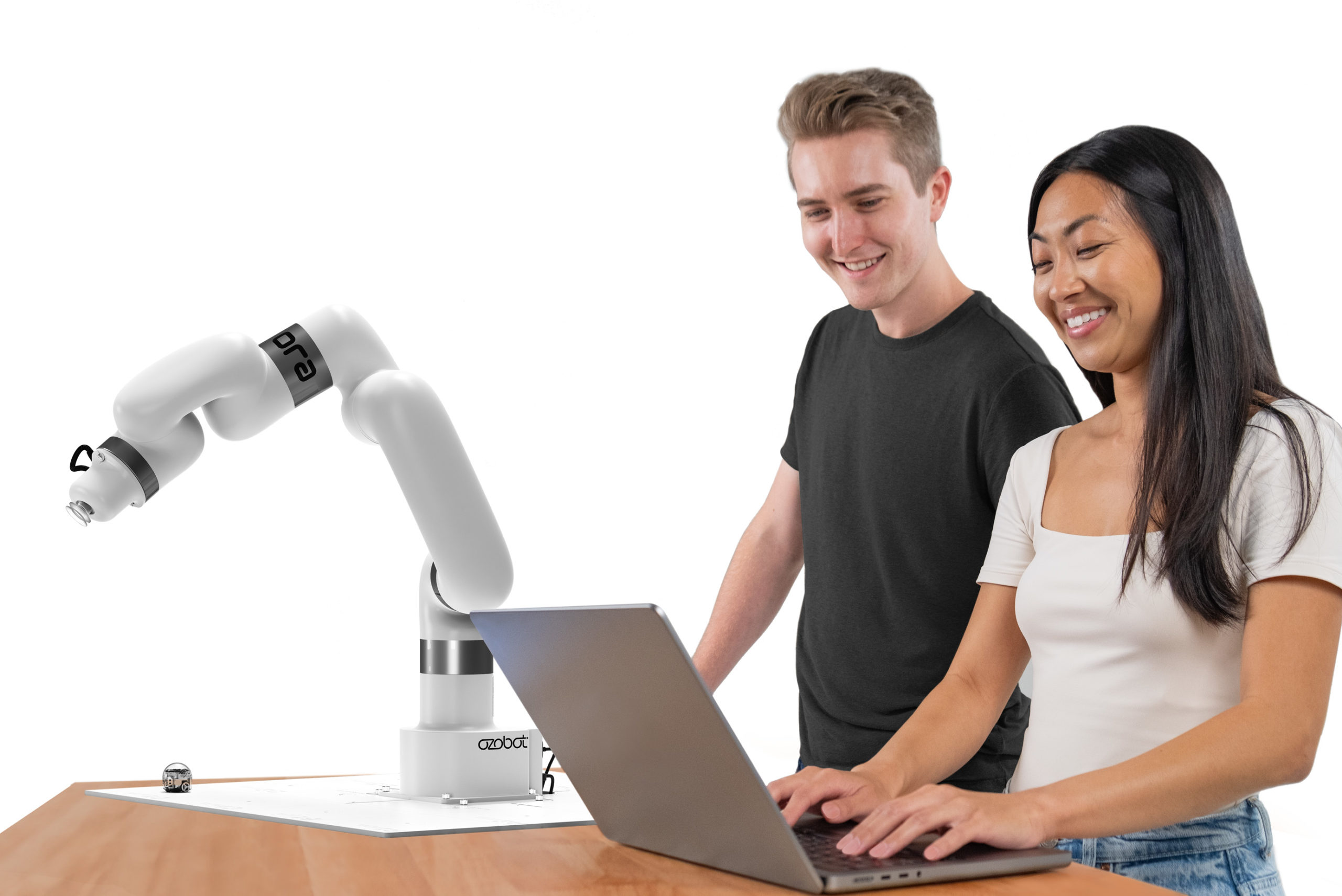The Ozobot Robotic Arm (ORA) is a six-axis professional grade cobot for education, designed for students in middle school and beyond. ORA transforms your classroom or STEAM lab into a miniature factory, to spark learning and exploration for the next generation of Process Engineers, Automation Technicians, Robot and Cobot Operators, and Factory Specialists.
Cobot VS Robot: Real World Use Cases
Robotic arms and cobotic arms serve two separate but crucial roles in the manufacturing and automation fields. While they both perform automated, repetitious tasks set by a technician or engineer, robots generally have fewer built-in safeguards. Because of this, robotic arms are generally meant to work separately from humans. Alternatively, collaborative robots (cobots) have offer numerous safety features that allow them to work alongside people. These cobots help to perform repetitive motion tasks or lift heavy objects, which help to increase efficiency and alleviate physical or repetitive stress injuries to workers. Aiding in manufacturing, robotic arms are generally seen performing heavier, large-scale assembly, welding, and painting tasks while cobotic arms are often implemented in lighter assembly, packaging, and quality control.
ORA Features & Specs: What’s Included
Standing just over two feet–or nearly three quarters of a meter tall, fully extended–ORA has a reach radius of 17.3 inches, or 440 mm. Equipped with either a finger or vacuum gripper, ORA is capable of picking up, moving, and manipulating objects around it. With six independently controllable axes, students can program ORA to operate in nearly any position to accomplish whatever task or challenge they encounter. Thanks to its plug and play design, ORA is easy to set up with its included power supply, emergency stop, and mounting hardware. Out of the box, students learn the basics of ORA’s movement and coordinate planes by moving the included cylinder blocks or Evo robots around the ORA Coordinate Mat.
Expanded Learning Opportunitites
One of the foremost features that students will learn as they progress through learning and working with ORA is structured concurrency. Built into the ORA Editor, a familiar block coding workspace, structured concurrency allows students to create complex systems, programming both ORA and Evo to complete separate tasks within the same code. This expands the learning opportunities and challenges for students working with ORA while encouraging collaborative projects between students in a variety of programming skill levels. Through our ever-growing 3D CAD Library, we provide students with a host of free ORA print accessories.
ORA Curriculum
ORA’s set up and connection processes are simple and straightforward thanks to the Editor. Built upon our existing Ozobot Blockly coding language, the Editor allows students both new and experienced with coding an easy entry into cobot programming. In addition to Blockly coding, Editor also supports coding in Python. With the support of workspace sharing, teachers can host multiple students, both in-person and remote, allowing each student to code on their own device, while still having access to ORA hardware to test their programs. And with its robust CTE-focused coding curriculum, students will build foundational skills, from the basic understanding of coordinate planes and robotics concepts, to advanced programming with conditional coding and ladder logic.
ORA: A Cobot Ready for Your Lab
Implementing ORA into your STEAM lab, high school, or trade school is a powerful and exciting way to prepare students for the careers and technologies of the future. And with its compatibility to educational technologies including 3D printing and laser cutting, students can expand their engineering skills by creating their own work holding and material manipulation accessories.
Available for purchase, ORA is an essential tool for creating future-ready engineers ready for factory operations, assembly lines, and automated manufacturing processes.









